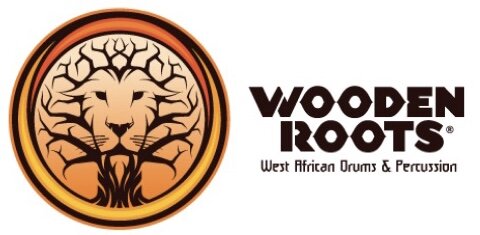Djembe Wood Types explained
In general the best woods for djembe are all of the woods that we post on our website. We must say however, that out of those that we post, the favourites and most popular around the world are typically Lenke & Guenou wood.
As for sound, this is tricky as each drum is unique, even if 2 drums were carved from the same tree and headed the same, they would not have the exact same sound. For this we have to rely on history, our ears and the general inner carving of the djembe. Of course the skin also plays a big part in the sound of the drum, but in general and based on history we have an idea of what each of these woods will sound like when they are headed. We will not know its true voice until its correctly headed and settled in over a period of time. The best sound is created from a well, inner carved djembe, however explaining sound is a bit like explaining what a banana “tastes like” which is hard to do. :)
As all woods have different purities we know that in general the best sounding drums are the more dense / heavier woods. When you play, the sound will resonate throughout the djembe so having this characteristic in a djembe is a big plus. When the drum is dense, heavy and thickly carved it typically sounds really good.
-Lenke wood is an all around good wood for djembe. It usually has a very dry and bright sound.
-Guenou wood is another good wood and just a little harder than Lenke. It will have a more melodic sound, a little ring to the wood, not a dry sound and it can also sound a little metallic.
-Dugura wood is almost like an ugly duckling, but the sound can be one of the bests in all of the woods. Dry, bright and nutty sounding.
-Gele aka "Iron wood”, named such because of how dense it is, this is the hardest of all the woods for djembe. It brings a melodic, bright and is a little dry (can be very heavy to carry)
-Djalla wood is a good balance between all Guenou, Gele and Lenke wood. With rich tones and melodic slaps
-Melina is a soft hardwood. If carved thick, these woods can sound nice (just nice, not overly special). An ideal student or beginner drum with good tones and nice bright slaps
-Cassia, comes with bright, melodic and rich tones - it’s very rare and hard to find - Like a “diamond".
At the end of the day, it’s all a matter of preference and the differences are fairly minute in the grand scheme of things. We head and tune all djembes so that they are able to properly perform and sound good in most environments.
My two pennies from Mr Brown
In general, I think that you can’t go wrong with Lenke wood and most djembefola (serious djembe players) that I know have at least one Lenke in their drum collection.
If you have any questions regarding how to select your next Djembe please get in touch. We are located in Suffolk, England. We have a 2000 sq. ft. shop, studio and workshop where we build, repair and teach djembe. We look forward to speaking to you and helping you to start or continue your drum journey!
